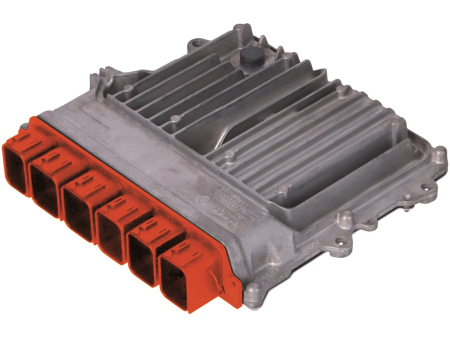DEEP-DISCHARGED BATTERY OVERNIGHT IN HYBRID CAR
THAT'S HOW FAST IT GOES
The problem of a slowly but steadily discharging starter and on-board battery, despite long journeys and correct external recharging, has been observed increasingly in recent years. In start-stop cars and increasingly in the electric and hybrid vehicle segment.
All assumptions of short trips, stop-and-go traffic and their negative effects on the charging behaviour of the battery have been checked and in most cases found to be inappropriate.
Reason enough to really get to the bottom of the issue.
Because immediately looking for the culprit in the form of the starter and on-board power supply battery is a fallacy in most cases. Why? Because in most cases the problem was not solved after the battery was replaced! Some interesting and relevant observations briefly noted.
The car has a life of its own when the ignition is switched off!
In some electric and hybrid cars, the battery energy management (BEM) charges the on-board battery shortly after starting and then often almost only in overrun mode - the engine is not separated from the drive train. In other words, when you take your foot off the accelerator and the car is rolling along. Even when driving more than 100 kilometres a day, some drivers have the problem of a discharged starter and auxiliary battery.
The result: start-stop function off, air conditioning and auxiliary heating not working or only working to a limited extent, sometimes we stood in front of a locked car because the keyless entry system was deactivated.
Next came several visits to the workshop and various test drives.
Despite great efforts, we continued to have problems with a partially and deeply discharged 12 V battery.
Then the first approach to a solution with a bit of luck and commissioner coincidence.
One evening, I visited 2 problem cars (PHEV Plug-in Hybrid Electric Vehicle, i.e. "plug-in hybrid") in the garage. Strange clacking noises could be heard from the engine compartment, and this so often and for so long during the night that the 12V on-board battery was deeply discharged! Last but not least, the mobile phone app displayed the message "Car Pass", i.e. car in deep sleep mode. These are the last twitches of the car before total failure, so to speak.
The next day, we went to the workshop with all our observations.
Result: The ABS control unit was to blame, as it was constantly activated when the car was locked, until the 12V on-board battery was completely discharged. In our case, the control unit was not defective but could be reset. Sometimes a software update is recommended by the workshop.
According to our research, in many cases various activating control units (ABS, engine control unit, ...) are the cause of a partially and deeply discharged on-board battery! Besides the well-known creeping and resting currents.
PS: The selected driving mode and its effect on the charging voltage must be taken into account. There is already an article on this in Battery Knowledge, see below under "Further articles on this topic".

How many ECUs are installed in a car?
Between 2006 and 2016, the average number of ECUs in vehicles increased from 28 to 38 across all vehicle segments. In the luxury class, up to 110 ECUs were installed in 2023; even in small cars there were around 20.
What are ECUs? Simply put, they are small computers that are built into our cars. They check various values in the car and compare them with the manufacturer's guideline values. If the measured value does not match, an error code is generated. There are countless control units in the vehicle that are responsible for different areas. For example, there is the engine control unit, the air conditioning control unit or the control unit for the ignition switch. In modern cars, there are sometimes more than 100 different control units!
Control units in idle mode
Control units are by no means switched off when the ignition key is removed and the doors are locked. It can take more than an hour until all control units are in sleep mode and only a small amount of current is flowing. This power supply is still required for the alarm and navigation system, the electronic immobiliser and to keep the control units on standby. How high this current is can be found in the vehicle operating instructions - it is usually approx. 30 to 60 mA.
More articles on this topic

